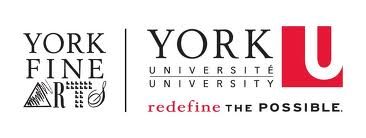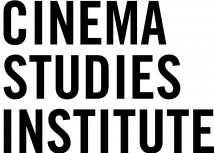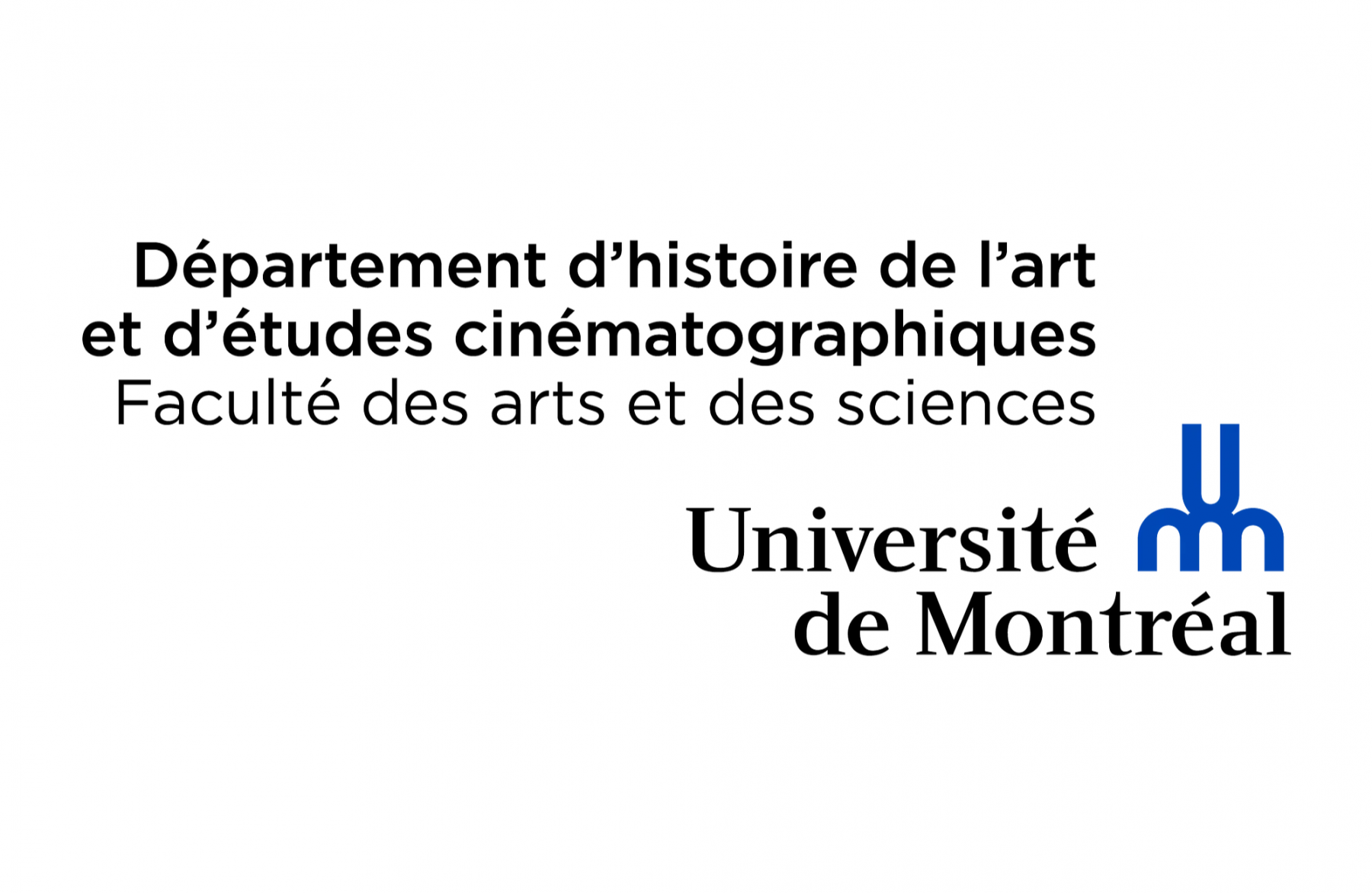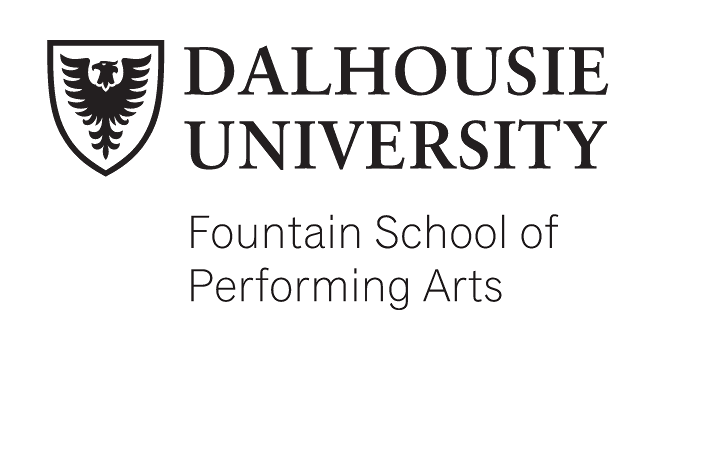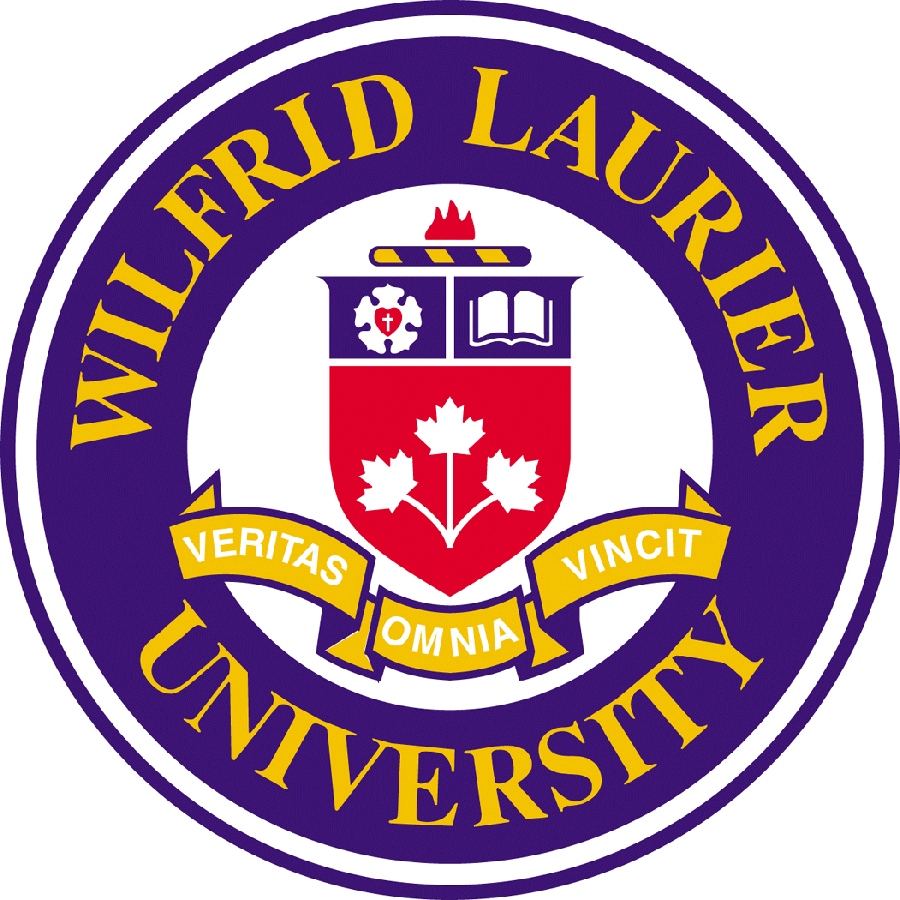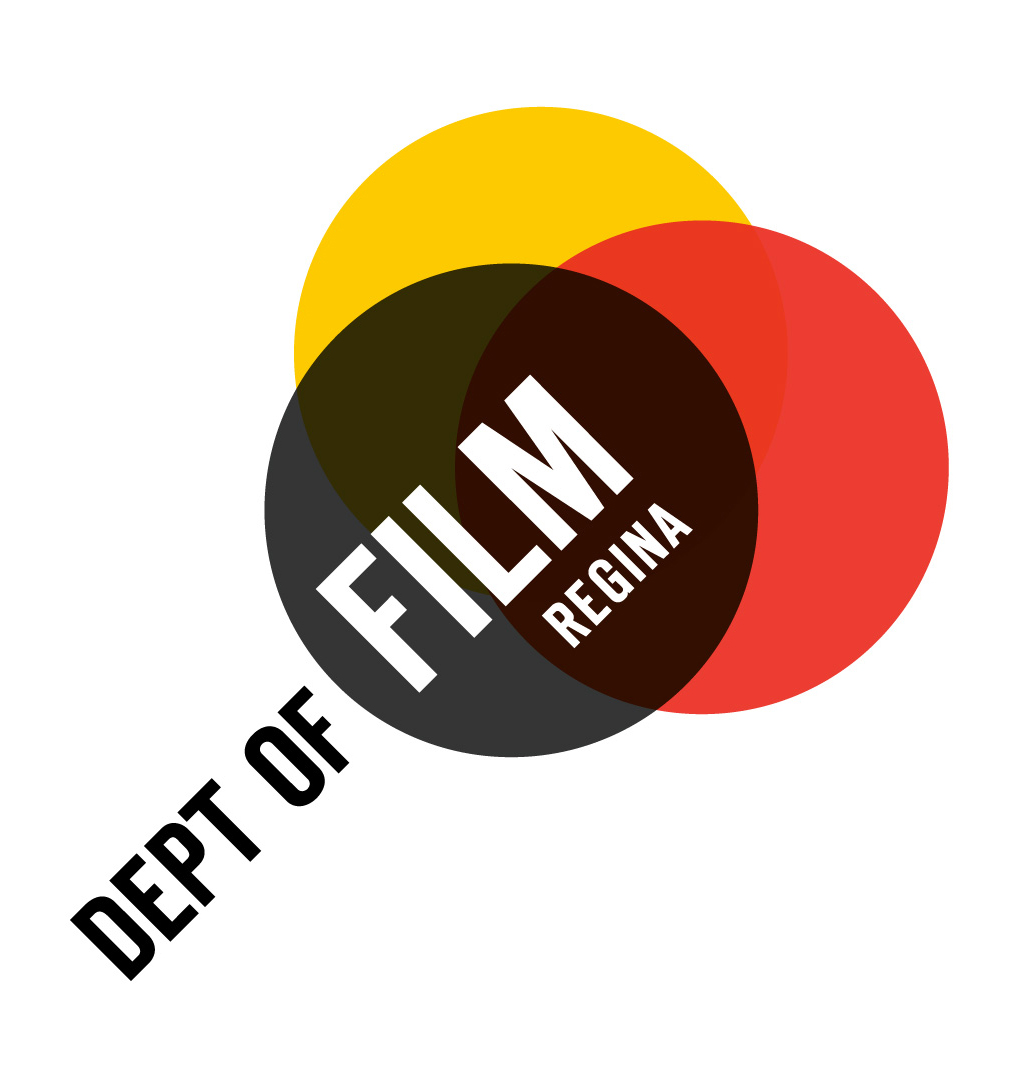Synoptique is soliciting proposals for book reviews for our upcoming issue 11.1, which is a special issue with the topic “Teaching Media Archives.” We invite reviewers to propose reviews for both the themed and general review sections. If you are interested in writing a review for this issue, please contact book.reviews@synoptique.ca with a short proposal (maximum 250 words) outlining the title, author, and publication information for your proposed book as well as your qualifications for reviewing it.
We are particularly interested in receiving proposals for the following books:
- Accidental Archivism: Shaping Cinema’s Futures with Remnants of the Past, edited by Vinzenz Hediger and Stefanie Shulte Strathaus. Meson Press, 2023. Online.
- Archival Film Curatorship: Early and Silent Cinema from Analog to Digital, by Grazia Ingravalle. Amsterdam University Press, 2023. 240 pages.
- Bootlegging the Airwaves: Alternative Histories of Radio and Television Distribution, by Eleanor Patterson. University of Illinois Press, 2024. 208 pages.
- Le cinéma dans l’oeil du collectionneur, edited by André Habib, Louis Pelletier, and Jean-Pierre Sirois-Trahan. University of Montreal Press, 2023. 344 pages.
- The Documentary Filmmaker’s Intuition: Creating Ethical and Impactful Non-fiction Films, by Shannon Walsh. Routledge, 2023. 256 pages.
- Exploring Past Images in a Digital Age: Reinventing the Archive, edited by Nezih Erdogan and Ebru Kayaalp. Amsterdam University Press, 2023. 258 pages.
- How Film Histories Were Made: Materials, Methods, Discourses, edited by Malte Hagener and Yvonne Zimmermann. Amsterdam University Press, 2023. 530 pages.
- Incomplete: The Feminist Possibilities of the Unfinished Film, edited by Alix Beeston and Stefan Solomon. University of California Press, 2023. 374 pages.
- Physical Characteristics of Early Films as Aids to Identification, by Camille Blot-Wellens. Indiana University Press, 2022. 336 pages.
- Recollecting Lotte Eisner: Cinema, Exile, and the Archive, by Naomi DeCelles. University of California Press, 2022. 238 pages.
- Reel Change: A History of British Cinema from the Projection Box, by Richard Wallace and Jon Burrows. John Libbey Publishing, 2022. 256 pages.
- Sustainable Resilience in Women’s Film and Video Organizations, by Rosanna Maule. Routledge, 2023. 264 pages.
- Tales from the Vaults: Film Technology over the Years and across Continents, edited by Louis Pelletier and Rachael Stoeltje. International Federation of Film Archives, 2023. 342 pages.
- Teaching Through the Archives: Text, Collaborations, and Activism, edited by Tarez Samra Graban and Wendy Hayden. Southern Illinois University Press, 2022. 354 pages.
We will also consider proposals for other recent scholarly books related to the discipline of Film and Media Studies, so long as they have not been reviewed in a previous issue of Synoptique. Proposals are due no later than Friday, April 26 and should be sent to book.reviews@synoptique.ca.
We accept submissions in both English and French. Final reviews must conform to the specifications outlined in our Submission Guidelines.
Jared Aronoff and Thomas Gow
Co-Editors-in-Chief
Synoptique: An Online Journal of Film and Moving Image Studies
www.synoptique.ca
CFP: The Power of Horror Compels You: Exploring Historic and Modern Iterations of Horror
Jack Halberstam argued of Bram Stoker’s seminal horror text that “Dracula is otherness itself.”In doing so, he contextualized the novel’s configuration of the period’s social anxieties toward sexuality, modernity, and antisemitism through the vampire figure. Further, Halberstam suggests that “Dracula is indeed not simply a monster, but a technology of monstrosity,” encompassing a perspective of the horror genre which recognizes its fundamental capacity to express anxieties and fears about the contemporary world.
Written eight decades before Dracula, Frankenstein often earns Mary Shelley the title “the mother of science fiction.” At the same time, this novel also converges around conventions of Gothic fiction and horror to express anxieties about modern technology and science and its relationship to the human, concepts which remain integral to contemporary examples of the genre across mediums.
When writing about modern horror Mikal Gaines reflects how the genre has largely evolved beyond its historical depictions of Black and BIPOC individuals as casualties or monsters to the driving force of the story. Gaines addresses how racism in Jordan Peele’s Get Out functions as the monster, and narrativizes the horror of racialization. Per Gaines’ argument, Peele draws on the tradition in the horror genre of complicating perspectives on race or class, as many argue George Romero’s original Night of the Living Dead film did.
The standards of monstrosity of a particular era manifest in its films, television series, novels, games, and other materials in or adjacent to the horror genre. The definition of horror or monstrousness changes continuously according to the evolution of culture and societal norms and as generic themes and modes of horror enter into the broader cultural consciousness. This call for papers seeks articles that explore what contemporary horror deems monstrous, in what ways, and how this presentation has changed over time. We hope to present an interdisciplinary exploration of how the horror genre has influenced aspects of contemporary culture, including its narratives across media forms and beyond media.
Possible topics for exploration include but are not limited to:
- A close reading of modern (2010 and later) horror novels, films, television series, or games that critically analyze their relationship to modernity
- The evolution of an archetype: how have depictions of original horror icons (the vampire, the zombie, Frankenstein, etc.) changed over time? How have they been typified, particularly in their more modern iterations?
- The transition of depictions of horror icons across media – how have depictions of, for example, zombies, changed across media, such as in the Night of the Living Dead film, the Walking Dead comic or TV series, the Last of Us video game?
- Real-world ‘horror’ (climate themes, pandemic themes)
- How have modern horror video games tackled their subjects compared to older iterations in the same or similar series?
- Topics that explore how horror conventions change across media modes
- The true crime phenomenon – the rise in popularity of true crime media and its influence on the broader cultural consciousness
- Exploring the aesthetic differences in presentations of horror across different media modes
- Compare the evolution of horror in different national contexts
- Address the lineage of horror in relation to its Gothic origins to a contemporary understanding of the genres
We are seeking articles of 5000-7000 words for publication in the next issue of Scaffold: the Journal for the Institute of Comparative Studies of Literature, Art, and Culture, an open-access graduate student journal. Articles will be double-blind, peer-reviewed, and published digitally through OJS. More information can be found here: https://ojs.library.carleton.ca/index.php/J-ICSLAC/index
Please email proposals of approximately 300-500 words to scaffoldjournal@gmail.com, including a brief author bio, by April 29th 2024. Accepted authors will be informed by early May, with full articles due for review by August 5th 2024.
For those interested in submitting, here is the information: https://ojs.library.carleton.ca/index.php/J-ICSLAC/announcement/view/57
If you are interested in contributing as a peer reviewer, please follow this link: https://ojs.library.carleton.ca/index.php/J-ICSLAC/announcement/view/48
CALL FOR PAPERS
SYNOPTIQUE ISSUE 11.1
“TEACHING MEDIA ARCHIVES”
Synoptique is inviting submissions for a special issue entitled “Teaching Media Archives.” This special issue will explore strategies to activate student interest in archives and media preservation, bridging a gap between film and media education and the archival profession. These strategies may be those that teachers and archivists have implemented or merely envisioned, and can encompass curricular or extracurricular courses, programs, initiatives, or activities. We welcome academic articles as well as annotated syllabi, informal reflections on teaching, interviews, roundtable discussions, and more.
The proliferation of dozens of streaming sites has made all of film history seem easily within reach. Further, digitized access to archival materials through projects like the Media History Digital Library means students can undertake archival research without ever setting foot into a physical archive or speaking to an archivist. In context with these changes, how can the behind-the-scenes work of media preservation be made more visible? How can we raise awareness of the practices and politics that determine which media artifacts are preserved and made available and which are not—whose histories are documented and whose are forgotten? How are instructors responding to these needs and collaborating with archivists to bring students into the archive, and the archive into the classroom?
While there has been significant interest in archival education as of late—evidenced not least by a recent special issue of Synoptique on the institutionalization of media archival graduate programs—less attention has been paid to the practical realities of pedagogy and instruction. What actually happens in the classroom? How do you “teach media archives”? We want to address this gap by devoting this special issue to exploring how we might envision media archival education today, sometimes with limited or no access to physical archives, and always balancing hands-on learning and practice with theory and history.
We invite scholars of all levels and disciplines who engage with media archives (defined broadly) and pedagogy (defined broadly) to contribute traditional peer-reviewed articles as well as alternative formats–including creative work, personal reflections, thought pieces, interviews, roundtable discussions or debates, annotated syllabi or assignments, and more. Suggested topics may include, but are not limited to:
- working with archival media as primary research documents, as creative source material, and as heritage artifacts
- the materiality of media and technological obsolescence
- the politics of the “canon”
- community archiving and counter-archives
- debates about naming—who gets to call themselves archives or archivists?
- media-archival education and social justice
- interventions into archival theory and/or practice
- student-led preservation and/or programming initiatives
- the preservation of student films
- internships, fellowships, assistantships, etc.
- pursuing the archival profession without access to archives, preservation, or conservation classes
- the personal DVD or home media collection as archive and the role of physical media in pedagogy
- archival education at the intersection of film and media studies, art history, archaeology, library and information science, museum studies, and more
- the value of an MLIS or other professional degree
- the impact and effects of COVID-19 on media archives’ past, present, and future
- making archival instruction—and the archival profession—accessible and inclusive to students from historically underrepresented groups, whether based on class, disability, ethnicity, gender, race, sexuality, or other socioeconomic factors
Reviews of relevant recent books, films, conferences, or other events are also welcome. Please do not hesitate to contact us with any questions regarding your submission ideas.
Essays submitted for peer review should be approximately 5,500-7,500 words. Submissions for the non-reviewed section should be approximately 1,500-3,500 words. Reviews should be approximately 2,000 words. All submissions must conform to Chicago author-date style (17th ed.). Video essays submitted for peer review are also accepted. All images must be accompanied by photo credits and captions.
Creative works and interventions in the form of digital video, still imagery, or other multimedia forms will be hosted or embedded on the Synoptique website, and/or otherwise linked to in the PDF version of the journal.
Submissions may be written in either French or English.
Please submit completed essays or works to the journal editors (editor@synoptique.ca) and copy the issue guest editors, Hugo Ljungbäck (hugo@ljungback.se) and Christian Balistreri (christianbalistreri14@gmail.com), by March 15, 2024. We will send notifications of acceptance by April 15, 2024.
CFP: Michelle Yeoh: Everything and Everywhere on Global Screens
Edited by: Lisa Funnell, Wayne King Tung Wong, and Dorothy Wai Sim Lau
Michelle Yeoh is a global popular culture icon whose career spans eras, genres, mediums, and entertainment/media systems. From her rise to transnational stardom performing her own stunts the golden era of Hong Kong action cinema to her crossover projects in well-known Hollywood/American blockbusters, Michelle Yeoh’s career has been defined by passion, hard work, and resilience as she has navigated the many barriers – social, political, cultural, financial – that have historically delimited Asian women on international screens. Her perseverance, craft, and expanding star power led to her casting in Everything, Everywhere, All at Once (2022) and she made history as the first Asian woman to win the Oscar for Best Actress for her performance in the film. As she enters into her early 60s, she is seeing no shortage of roles and opportunities, and she continues to headline these projects while opening doors for other Asian women to follow in her footsteps.
In light of her extensive and expansive career that spans over 60 films and television shows, this anthology offers the first comprehensive and critical consideration of her entire body of work – exploring both popular and lesser known performances. We are looking for papers on a range of topics including but not limited to:
- Hong Kong eras – girls with guns, action films, comedies, dramas
- Transnational Co-productions
- Crossover films – Bond films, Hollywood/British blockbusters
- Mythical Films production company
- Asian American film and performance
- Marvel
- US television – Star Trek Discovery, The Brothers Sun
- animation and video game performances
- identity and performance
- transnational stardom and reception
- barriers – race, ethnicity, nationality, gender, etc.
Please submit a 250 word abstract along with a CV to lisa.m.funnell@gmail.com by March 15, 2024. Please direct any questions or inquiries to this email as well.
The dates for this conference have been moved to March 21-22, 2024, in order to double-up with this year’s Crossing Borders, a multi-disciplinary student conference.
As a result, the CFP for the Two Days of Canada conference is being circulated once again, with a new deadline for proposals: February 2, 2024.
Call for papers – By February 2, 2024.
Liminal spaces: Two Days of Rural Canada
Seeing Canada though a rural lens; the places in‐between
When considering Canada, most people think of Canadian cities or the wonder of its vast wilderness. We often overlook, sometimes literally, rural Canada, those spaces in‐between. We fly over them and drive through them, but don’t often stop to consider what the people and the places contribute to Canada as a nation. While most of Canada’s landmass is rural, more than 80% of its population is urban, leading to this significant social disconnect.
This conference will consider the world between the cities and the wilderness, those liminal spaces, and the people, culture, politics, and issues of concern within them. We invite scholars from a range of disciplines who are examining life in rural Canada. Topics can include but need not be restricted to the following themes:
- Immigration in rural Canada
- Indigenous communities in rural Canada
- Canada’s rural politics
- Socializing in rural Canada
- Health care in rural Canada
- History of rural spaces in Canada
- Rural‐urban tensions
We invite individual papers or panel proposals.
For an individual paper proposal, please submit an abstract of your presentation (maximum 250 words) and a one‐page CV identifying institutional affiliation and key scholarly contributions.
For a panel proposal, please provide a brief abstract for each presentation (max 250 words each) and a brief overview of the theme of the panel (max 250 words) along with short biographies of each presenter (also max 250 words). We expect all sessions to be maximum 90 minutes regardless of the number of presenters in a proposed panel.
We welcome and encourage students, so do not be deterred if your CV is yet to be filled with the remarkable contributions you will someday make.
Please send all proposals and inquiries to Dan Malleck, Director, Centre for Canadian Studies through the Centre’s email address: CanadianStudies@brocku.ca by February 2, 2024.
Call for Papers: Reorienting the Sublime
McGill University
Department of Art History and Communication Studies
Graduate Student Symposium
Deadline for Submissions: December 29, 2023
“The sublime is something added that expands us, overstrains us, and causes us to be both here, as dejects, and there, as others and sparkling. A divergence, an impossible bounding. Everything missed, joy—fascination” — Julia Kristeva, Powers of Horror.
The Department of Art History and Communication Studies at McGill University is pleased to invite submissions for the Annual Graduate Symposium “Reorienting the Sublime,” to be held on Thursday, April 4 and Friday, April 5, 2024.
The sublime has held a steady yet complex position within the discourse of art history and visual culture, and encourages a consideration of its relationship to media and communication studies. Its perhaps best known form can be traced to Edmund Burke in the 18th century, who defined the sublime through a dual emotional quality of attraction and fear, which Immanuel Kant honed to describe a magnitude of unlimited feeling that humans are unable to possess. Jacques Lacan, who follows from a Freudian notion of the sublime as a positivised or aestheticised counterpart to the uncanny, also suggests that the “sublime object” points us towards that which has the power to de-realise and dematerialize, revealing the contradictions at the center of a law.
As such, the sublime has provided a rife affective terrain for artists to draw from that could elicit awe, power, and a certain delight in transgressing limitation. It has also offered a useful framework to think through the meanings and affects circulating new communication technologies, which are often simultaneously feared and viewed as opportunities for human transcendence. At the same time, the sublime has provided the means to bolster colonial understandings of “taming the unknown” and efforts to seek command of that which appears to be out of order. What can be said of the sublime as revelatory, a call to re-translate or re-visit the foundational systems of meaning which structure the world and our place in it? How might we position the sublime in relation to contemporary politics, culture, and technologies? In what ways do awe, terror, beauty, and overwhelm play into our current objects of research, and how might these aspects of sublimity reorient the objects and approaches within our fields of study?
Following this history of contestation, our symposium seeks to consider the state of the sublime today and how its discourse continues to take shape within the interdisciplinary realms of art history and communication studies. We invite papers from all periods of art history, communication studies, and related disciplines to consider these questions, as well as the following topics as prompts for further thought:
- Beyond the worldly, transcendence, (dis)embodiment
- Affect, desire, aversion, horror, tragedy
- Consumption, glut, excess, control
- Technological sublime
- Hyperreality, capitalist/cyber/digital sublime
- Landscape painting, romanticism, colonial origins and post-colonial critiques
- Gestalt, Gesamtkunstwerk
- Historical reconfigurations of Kant, Burke, Hegel, Lacan, etc.
- Incomprehensibility, inspiration, confusion
- The non-human, anthropocene, pre-linguistic
- (Against) the uncanny, the beautiful, the harmonious
The Art History and Communication Studies Graduate Symposium committee invites proposals for fifteen-minute-long paper presentations. Current and recently graduated Masters, Doctoral, and Postdoctoral students from various Humanities fields whose research addresses this year’s theme are encouraged to apply. Applicants should submit an abstract of no more than 300 words with the title of the paper, along with a separate document that includes a 250-word bio, to ahcs.pgss@mail.mcgill.ca by Friday, December 29, 2023. Please include your full name, affiliation, and contact information in your bio. A blind panel will be reviewing all submissions, so please ensure that your name and other identifying marks do not appear in the abstract document.
While we encourage in-person participation at the symposium, we will have limited spots for presentations over Zoom. If you would like to be considered for a virtual presentation, please indicate so in your abstract, in addition to any other accommodations or considerations you would like the committee to know of.
Sincerely,
Sofia Di Gironimo, Marcus Prasad (Co-Chairs), and the AHCS Graduate Symposium Committee
McGill University | Montreal, Quebec
CFP: Cinephile 18.1 – (Un)recovering Lost Futures
The late cultural theorist Mark Fisher asks, “how long can a culture persist without the new?” For Fisher, the postmodern future under capitalist realism, “harbours only reiteration and re-permutation” (6-7). In capitalism’s inability to look beyond itself, media culture has become excessively nostalgic and “incapable of generating any authentic novelty” (63). Accordingly, one can observe a certain malaise surrounding media’s inability to imagine new and alternative futures.
Music, fashion, film, T.V., and digital media have all primarily engaged in nostalgia rather than an imagination of the future. What’s more, this nostalgia has been formalized through an aestheticization of the past — fashion and style trends mimic 70s, 80s, and 90s culture, while the emulation of film grain in digital cinema is more common. One need not look further than recent cultural touchstones such as eighties exploitation in Stranger Things (2016) and Joker (2019), greatest hits soundtracks in Baby Driver (2017) and Guardians of the Galaxy (2014), and contemporary sampling practices evident in Jack Harlowe’s “First Class” to find that innovation in form and material is no longer embraced by the mainstream. Instead, these media foreground the past such that nostalgic pastiche and aesthetic remediation is the text.
We thus echo the statement that opened this call for papers: How long can a culture persist without the new? We call for research that queries the new. Where is it, what is it, for whom does it exist, and when will it come? We call for papers across various disciplines that consider the political, theoretical, and philosophical implications of this cultural malaise – and its potentially opposing forces – as they interface with changing digital media and technology, minor and major cinema, postcolonialism and marginalized identities, algorithms and artificial intelligence, and other cultural phenomena. Papers that are submitted to issue 18.2 of Cinephile may consider but are not limited to the following questions:
1. How might novel forms like social media or artificial intelligence help imagine novel futures? While emulating the past has become a cultural obsession, how does the shift from analogue to digital media enable or disable our capacity to imagine the new?
2. If there is a ‘new’ to imagine, for whom does it exist?
3. Where might we find the new?
4. Is it more apparent in certain parts of the world and, if so, what are the ethical implications of making such a claim?
5. What new forms of pedagogical approaches can we use while teaching with new media?
We encourage submissions from graduate students, postdoctoral researchers, and established scholars. Papers should be between 2,000-3,500 words, follow MLA guidelines, and include a detailed works cited page, as well as a short biography of the author. Submissions should be directed toward SUBMISSIONS@CINEPHILE.CA indicating the intended issue and general inquiries toward INFO@CINEPHILE.CA.
Submissions are due by January 6th 2024.
Cinephile is the University of British Columbia’s film journal, published with the continued support of the Centre for Cinema Studies. Cinephile and UBC Vancouver are located on the traditional, ancestral, and unceded territory of the Musqueam, Squamish, and Tsleil-Waututh Nations of the Coast Salish peoples. Caring for this land since time immemorial, the culture, history, and traditions of the Coast Salish people are inextricable with these regions and enduring in these spaces. Cinephile acknowledges its identity as a product of settler violence and colonization and is committed to learning and engaging with Indigenous voices and histories on the UBC campus. Previous issues have featured original essays by such noted scholars as Lee Edelman, Slavoj Zizek, Paul Wells, Murray Pomerance, Ivone Marguiles, Matt Hills, Barry Keith Grant, K.J. Donnelly, Robert Stam, and Sarah Kozloff. Since 2009, the journal has adopted a blind review process and has moved to annual publication. It is available both online and in print via subscription and selected retailers.
Incoming editors: Will Riley and Liam Riley
Indicative Bibliography
Brinkema, Eugenie. The Forms of the Affects. Duke University Press, 2014.
Brown, William. Non-cinema: Global Digital Film-making and the Multitude. Bloomsbury Academic, 2018. Accessed 10 September 2023.
Culp, Andrew. Dark Deleuze. Translated by Achim Szepanski, Laika Verlag, 2017. Accessed 10 September 2023. Deleuze, Gilles. “Postscript on the Societies of Control.” October, vol. 59, 1992, pp. 3-7.
Denson, Shane. Discorrelated Images. Duke University Press, 2020. Accessed 10 September 2023.
Dery, Mark. “Black to the Future: Interviews with Samuel R. Delany, Greg Tate, and Tricia Rose.” Flame Wars: The Discourse of Cyberculture, Duke University Press, 1994. Accessed 10 September 2023.
Fisher, Mark. Capitalist Realism: Is There No Alternative? Zero Books, 2009.
Fisher, Mark. Ghosts of My Life: Writings on Depression, Hauntology and Lost Futures. Zero Books, 2014.
Wilderson, Frank B. Afropessimism. WW Norton, 2020. Accessed 10 September 2023.
Zuo, Mila. Vulgar Beauty: Acting Chinese in the Global Sensorium. Duke University Press, 2022. Accessed 10 September 2023.
Call for Papers: FRAGMENTATION
Version française ci-bas.
2024 Annual Graduate Student Conference
University of Toronto Cinema Studies Institute
Friday, February 2nd to Saturday, February 3rd, 2024
Keynote address by Dr. Maggie Hennefeld, University of Minnesota
At 24, 48, 60, or 120 fragments per second, photographic images unite to create the movies. With discrete pieces at its basis, cinema has always been a disjointed art form, resting upon the illusion of fluidity that continually comes into being before the eyes of spectators. Classical Hollywood cinema’s attempts to deny or evade this reality have been met with equally dedicated experimental practices that sought to utilize cinema’s segmented nature. From Luis Buñuel’s surrealist cross-cutting in Un Chien Andalou to Stan Brakhage’s poetic abstractions in Mothlight, the filmic fragment is exposed and presented as an object of fascination in its own right. In the age of the digital, disjuncture has only been further accentuated on the level of pixels and glitches by a new generation of artists. As avant-garde filmmakers have struggled since the onset of cinema with the pieces that are held together as moving images, scholars have sought to likewise understand the implications of an art form whose popular manifestations rest upon the denial of its fragmentation.
Cinema’s ability to suture discrete images, places, and bodies together has come to the forefront of film theory from psychoanalysis through post-structuralism and into the realm of digital media studies in the 21st century. The connected fragments of moving images parallel Max Horkheimer and Theodor Adorno’s description of the post-Enlightenment world of abstraction, where segmentation precedes a subsequent ideological unification. Meanwhile, according to Mary Ann Doane, the unification on-screen of discrete parts of the human body through the correlation between an actor’s/actress’s image and voice staves off our “fear of fragmentation.” As digitalization reduces the film fragment from frame by frame to pixel by pixel, our ability to grasp the technicity behind the moving image apparition is complicated and obfuscated further and further. Shane Denson’s work on discorrelation highlights that “moving images mediate our transition into a world of media not cut to human measure.”
The Cinema Studies Institute at the University of Toronto’s 2024 Graduate Conference seeks submissions that attempt to address the inheritance of the fragment in cinema and media. As moving images morph, the question “What is the stuff that films are made of?” remains relevant for emerging scholars. How do we utilize the unveiling of the disjuncture of cinema’s underpinnings in contemporary theorizations? Are there alternative ways for uniting cinema’s photographic fragments that could still be called “film”? How can the suture of fragmented bodies on-screen provide ways to foster empathy and social change? Does the fragmentation of cinema allow for a unification of fragmented and diasporic communities? How does cinema’s position in the 21st century depend upon its ability to be taken apart and put together again, frame by frame, fragment by fragment?
Sample topics might include but are not limited to:
- Abstraction
- Apocalyptic imagery, earthquakes, a broken/fragmented Earth
- Archival Fragments/Fragmented Archives
- Assemblage/montage
- Audience fragmentation
- Borders/boundaries
- Categorization disagreements within genre fandoms (audience/spectatorship)
- Digital Afterlives
- Discorrelation
- Ephemerality/the ephemeral
- Experimental film
- Fragmentation and Diaspora
- Fragmentation and Form
- Fragmentation and violence
- Fragmented bodies
- Fragmented geographies
- Fragmented self, personal/collective memory
- Fragments & Genre (i.e. abject, uncanny, etc.)
- Glitch Aesthetics
- Historiographical Frameworks/Historiographical Disagreement
- Identity and/or Ways of Being
- In and beyond the frame
- Media archaeology/ruminations
- Mediation/re-mediation
- Politics & the fragment
- Post-cinema
- Reception histories
- Refractions (as through fragmented glass)/Light/Colour
- Soundscapes/the voice
We welcome English and French submissions from independent scholars and graduate students worldwide. Applicants must submit a brief abstract (300-500 words) and a bio of 50-100 words to csgraduatestudentunion@gmail.com by November 24, 2023. Conference acceptances will be sent out by the end of December.
Submissions should provide the following information:
- Name & pronouns
- Level of study and name of institution (if applicable)
- Title
- Abstract
- Bio
- 3-5 item bibliography
Appel à Contributions: FRAGMENTATION
À 24, 48, 60 ou 120 fragments par seconde, les images photographiques s’unissent pour créer les films. Basé sur des pièces autonomes, le cinéma a toujours été une forme d’art parcellaire, reposant sur l’illusion de fluidité qui se réalise sans cesse devant les yeux des spectateurs. Les tentatives du cinéma classique hollywoodien de nier cette réalité ou y échapper ont été contrecarrées par des tentatives expérimentales tout aussi dévouées, cherchant à utiliser la nature segmentée du cinéma. Du montage alterné surréaliste chez Luis Buñuel dans Un Chien Andalou aux abstractions poétiques de Stan Brakhage dans Mothlight, l’image filmique est exposée et présentée comme un objet de fascination en elle-même. À l’ère du numérique, la disjonction n’a fait que s’accentuée au niveau des pixels et des bogues par une nouvelle génération d’artistes. De la même façon que les cinéastes d’avant-garde se sont acharnés sur les pièces rassemblées sous forme d’images animées, les académiciens ont cherché à comprendre les implications d’une forme d’art dont les manifestations populaires sont fondées sur le déni de sa fragmentation.
Dans le XXIe siècle, la capacité du cinéma à suturer ensemble des images, des lieux et des corps distincts s’est retrouvée au premier plan de la théorie du cinéma, de la psychanalyse au post-structuralisme et dans le domaine des études de médias numériques. Les fragments d’images animées liées entre elles sont parallèles à la description par Max Horkheimer et Theodor Adorno d’un monde d’abstraction qui suit le siècle de lumières, où la segmentation précède une unification idéologique ultérieure. Pendant ce temps, selon Mary Ann Doane, l’unification à l’écran de parties distinctes du corps humain grâce à la corrélation entre l’image et la voix d’un acteur/actrice écarte notre « peur de la fragmentation. » Alors que la numérisation réduit la fragmentation du film d’image par image à pixel par pixel, notre capacité à saisir la technicité derrière l’apparition d’images animées est de plus en plus compliquée et obscurcie. Les travaux de Shane Denson sur la discorrélation soulignent que “les images animées médiatisent notre transition vers un monde médiatique inapte aux mesures humaines.”
La Conférence 2024 des cycles supérieurs de l’Institut d’études cinématographiques à l’Université de Toronto est à la recherche de soumissions qui tentent de répondre à l’héritage du fragment dans le cinéma et les médias. À mesure que les images animées se transforment, la question “De quoi sont faits les films?” reste pertinente pour les chercheurs émergents. Comment utiliser la révélation de la disjonction des fondations du cinéma dans les théorisations contemporaines? Existe-t-il d’autres moyens d’unir les fragments photographiques du cinéma que l’on pourrait encore qualifier de “film”? Comment la suture des corps fragmentés à l’écran peut-elle fournir des méthodes favorisant l’empathie et la transformation sociale? La
fragmentation du cinéma permet-elle une unification de communautés fragmentées et diasporiques? Comment la position du cinéma au XXIe siècle dépend-elle de sa capacité à être démontée et reconstituée, image par image, fragment par fragment?
Les sujets peuvent inclurent, mais ne sont pas limités à:
- L’Abstraction
- L’Imagerie apocalyptique, les tremblements de terre, une Terre brisée/fragmentée
- Fragments d’Archivage/Archives Fragmentées
- Assemblage/montage
- Fragmentation des spectateurs
- Frontières/Limites
- Désaccords autour des catégorisations dans le fandom du genre (audience/spectateurs)
- Les « afterlives » numériques
- Décorrélation
- L’Éphémère
- Le Cinéma expérimental
- Fragmentation et Diaspora
- Fragmentation et Forme
- Fragmentation et Violence
- Corps fragmentés
- Géographies fragmentées
- La fragmentation du soi, mémoire individuelle/collective
- Fragments et Genre (i.e. l’abject, l’inquiétante étrangeté, etc.)
- Esthétiques du Glitch
- Les Cadres Historiographiques/Désaccords Historiographique
- L’identité et/ou Façons d’être
- Dans et au-delà du cadre
- Archéologie médiatique/ruminations
- Médiation/remédiation
- La politique et le fragment
- Post-cinéma
- Historicisation de la réception
- Réfractions (projections de verre fragmentée)/Lumière/Couleur
- Le paysage sonore/la voix
Nous acceptons des soumissions francophones et anglophones d’étudiants aux cycles supérieurs et chercheurs indépendants de partout dans le monde. Les parties intéressées doivent soumettre un bref résumé (300-500 mots), ainsi qu’une brève biographie de 50-100 mots à csgraduatestudentunion@gmail.com jusqu’à le 24 novembre 2023. Les acceptations de la conférence seront envoyées avant la fin du décembre.
Les soumissions doivent inclure l’information suivante :
- Nom-Prénom
- Niveau d’études et nom d’institution (le cas échéant)
- Titre
- Résumé
- Biographie
- 3-5 pièces de bibliographie
The Graduate Visual Culture Association at Queen’s University
Context & Meaning XXIII:
Present | Past
CALL FOR PAPERS
We are pleased to announce the twenty-third annual Context and Meaning Graduate Student Conference, hosted by the Queen’s University Department of Art History and Art Conservation from Friday, February 9th to Saturday, February 10th, 2024.
How do we look at the past? How does the past shape our present–or vice versa? Such questions were particularly apt in the aftermath of the Second World War, when Theodor Adorno popularized the concept of Vergangenheitsbewältigung (“coming to terms with the past”) to explore how post-war Germans examined their role in the conflict. However, scholars such as Max Czollek and Peter Chametzky have indicated cracks in Germany’s apparent success in grappling with its complicated past. Both swap out the “past” in Adorno’s formulation for “present,” proposing instead “Gegenwartsbewältigung,” whereby our debates about the past are often proxies for coming to terms with the present. History is produced in the present, as historians of visual culture are well aware. Studies have highlighted the subjective and emotional position of the scholar towards their temporally displaced objects of study and considered how such objects are interpreted, disseminated, and canonized according to contemporary concerns. Scholars have also considered temporality in visual culture by emphasizing the ephemerality of material objects, the time-bound processes of art and image making, and how images and artworks can be read as records of their origins. Indeed, it is high time to take time seriously.
By selecting the theme of Present | Past for the twenty-third annual Context and Meaning conference, the Graduate Visual Culture Association at Queen’s University seeks to engender dialogues about how time is experienced and constructed, how we view the past through a contemporary lens, and how artworks, images, and other objects of visual culture mediate history.
Some potential topics that we hope to explore include, but are by no means limited to:
- The persistence of colonial structures in present cultural production
- Biases and absences in museum and archival collections
- The roles of art, cinema, and visual/material culture in mediating time
- Moves to re-centre marginalized groups in our narratives of the past
- Nostalgia and national mythologizing using artists, artworks, and design
- Discourses around public monuments and commemorative projects
- Approaches to diversifying art historical knowledge and pedagogy
- Rehanging of public art collections and “hacking” the museum
- Conflicts between historical knowledge and contemporary demands in art conservation
- Documentation of personal and social histories through craft
- Appropriations and uses of images in politics and activism
- Artworks dealing with time, history, and ephemerality
Context and Meaning XXIII intends to provide an inclusive forum for multi-disciplinary academic discussion on visual and material culture. We encourage paper submissions from students and scholars with a broad range of backgrounds and approaches whose work employs visual culture for interpreting the past and present. Submissions are welcome from current graduate students, as well as those who have completed their graduate
studies within the last two years. We seek to assemble a diverse group of scholars in order to foster interdisciplinary discussions, and expect submissions from fields including anthropology, architecture, art and design history, classics, conservation, economics, education, environmental studies, film and media studies, gender and sexuality studies, history, Indigenous studies, Jewish studies, language and cultural studies, literary
studies, material culture studies, music, museum studies, philosophy, policy studies, political studies, religious studies, screen cultures and curatorial studies, sociology, and theatre.
If you are interested in participating in Context and Meaning XXIII, being held from Friday, February 9th to Saturday, February 10th, please visit www.gvca.ca/context-and-meaning to submit an abstract of no more than 300 words with the title of your paper and a 150-word bio. As we hope to again host a hybrid conference, you will be prompted to indicate your preference to present either in-person or online. Presenters will be asked to deliver a 15-minute presentation that will be followed by a panel discussion period. The deadline to submit an abstract will be at the end of day, Monday, November 20th, 2023. Thank you to all who apply!
Nicholas Markowski and Peter Sproule
Conference Co-Chairs
Context & Meaning XXIII
contextandmeaning@queensu.ca
Graduate Visual Culture Association
Department of Art History and Art Conservation
Ontario Hall, Queen’s University
Kingston, Ontario, K7L 3N6, Canada
Queen’s University is situated on the territory of the Haudenosaunee and Anishinaabek.
Ne Queen’s University e’tho nońwe nikanónhsote tsi nońwe ne Haudenosaunee tánon Anishinaabek tehatihsnónhsahere ne óhontsa.
Gimaakwe Gchi-gkinoomaagegamig atemagad Naadowe miinwaa Anishinaabe aking.
CFP: “Revisiting a Golden Era: Canadian Cinema of the 1980s and 90s”
Call for essay proposals for an edited volume about Canadian films, filmmakers, and film culture (for submission to McGill-Queens University Press)
Edited by Lee Carruthers and Charles Tepperman
This volume proposes a reconsideration of the aesthetic, cultural, and industrial development of motion pictures in Canada between (approximately) the years 1980 and 2000. This period has often been described as a ‘golden era’ of Canadian cinema, seeing the rise to prominence of a new generation of Canadian filmmakers and the emergence of new institutions to support them. Piers Handling has characterized this phenomenon as the emergence of a distinctive Canadian cinema that is “esoteric, diverse, and multifaceted.” As he writes, Canadian cinema was newly mobilized in this phase through festivals, finding an equal standing with literature: “Cronenberg, Arcand, Egoyan and Maddin stood shoulder-to-shoulder with Atwood, Ondaatje, Martel and Richards.” Significantly, this emergence also coincided with the maturation of academic Film Studies in Canada, a parallel development that resulted in robust critical and scholarly responses. While the films and film contexts of this period were much discussed in the 80s, 90s and early 2000s, they demand a new assessment.
We invite essay submissions about Canadian cinema of the 1980s and 90s, deploying established critical approaches (textual and cultural analysis, stylistic analysis) as well as new critical methods (such as transmedia and transnational analyses, data-based research, and media industry studies). The collection particularly values close readings of the films of this period, reassessed through the lens of the present, which might serve as exemplary essays for undergraduate and graduate coursework. We encourage reassessments that are critically agile and historiographical in approach, reflecting on the distance that separates us from these films and filmmakers and also the discourses and methods that scholars have brought to them.
Articles may address French-, English-, and/or Indigenous-language filmmaking, and films and film cultures from diasporic communities and international co-productions. We ask these contributions to consider the following questions: What does it mean to (re)consider this film / filmmaker / topic in our current moment? What does this reconsideration show us about Canadian cinema of the 1980s and 90s and about contemporary film practice? How do contemporary critical / theoretical / methodological / historiographical resources freshly illuminate the topic, forming contrasts and continuities with earlier examinations? How, for example, do recent conceptualizations of (trans)national cinema, decolonization, anti-racism, gender, and/or media industries reposition our perspective on the films/contexts of Canadian cinema in this period?
Contributions can be in various forms and may include short essays (4000-5000 words), long essays (6000-8000), and interviews.
Possible topics:
- reconsideration of a prominent film or filmmaker ie) Atom Egoyan, David Cronenberg, Denys Arcand, Patricia Rozema, Léa Pool, Deepa Mehta, Don McKellar, Alanis Obomsawin, Robert Lepage, François Girard, Micheline Lanctôt, John Greyson, Robert Morin, Guy Maddin and others.
- consideration of a film, filmmaker, or context that has been overlooked by scholars but that can be productively retrieved for the present
- Indigenous filmmaking, decolonization
- gender, cultural difference, and diversity in Canadian cinema
- queer and LGBTQ films and cultures
- examination of film styles, trends, genres, popular cinema, and art cinema
- film festivals (rise of TIFF, other festivals)
- film policy (CCA, Telefilm, tax credits)
- film distribution and exhibition (theatrical, community, TV)
- independent, avant-garde, and experimental film in Canada
- developments in documentary film
- video, transmedia, new media
- film culture, audiences, and reception
- co-productions, transnational cinema in the Canadian context
- local scenes, regional contexts
- other topics related to Canadian cinema in the 1980s and 90s
Article proposal/abstract (300-400 words + bibliography/filmography) will be due on January 15, 2024. Final essays will be due by Sept 1, 2024.
Please send your proposals and inquiries to Lee Carruthers (lee.carruthers@ucalgary.ca) and Charles Tepperman (c.tepperman@ucalgary.ca).
Archives
Membership Services / Adhésion
To join or renew with FMSAC, please click here to access Membership Services.
Pour se joindre à l'ACÉCM ou pour renouveler votre adhésion, cliquez ici pour accéder aux services aux membres.
For more information about membership benefits, click here.
Pour plus d'informations sur des avantages d'adhésion, cliquez ici.




